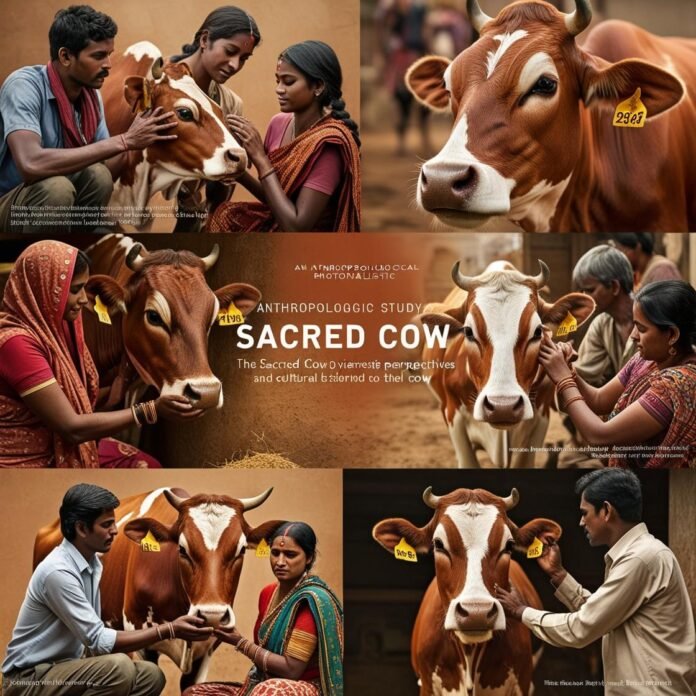The “sacred cow” in India is a complex and multifaceted topic that intersects religion, ecology, economy, and social structure. This subject has sparked debates among anthropologists, economists, and historians about the reasons behind the reverence for cattle and its implications for Indian society.
Historical and Religious Context
- Vedic Period:
- Cattle sacrifice was central to Vedic rituals and controlled by Brahman priests.
- The religious status of cattle evolved as Hinduism developed, with cows becoming symbols of purity.
- Products from cows, such as milk and dung, gained ritual significance, while consuming beef became taboo.
- Ahimsa and Jain-Buddhist Influence:
- The doctrine of ahimsa (non-violence) promoted by Jainism and Buddhism in the 6th century BCE elevated the sanctity of the cow.
- Special shelters (gaushalas) were established for abandoned and aged cows, reflecting societal care for cattle.
- Cows as a Marker of Hindu Identity:
- During the periods of Muslim and British influence in India, cow reverence became a cultural and political marker distinguishing Hindus.
Theoretical Debates
Marvin Harris’s Argument: A Materialist Perspective
- Economic Utility of Cattle:
- Harris argued that the sacred status of the cow has practical ecological and economic benefits rather than being solely rooted in religious ideology.
- Cattle contribute to the grain-based subsistence economy by providing:
- Draft Power: Bullocks are indispensable for plowing and transportation.
- Dung: Used as both cooking fuel and fertilizer, reducing reliance on costly fossil fuels.
- Symbiotic Relationship:
- Cows survive on agricultural by-products and grazing, contributing back to the system without requiring expensive inputs.
- Harris highlighted that cows are more valuable alive than dead in an agrarian economy, especially for small-scale farmers.
- Environmental Adaptability:
- Indian cattle are hardy and recover well from droughts, making them suited to the monsoon-dependent agricultural system.
Critics and Alternative Views
- Irrational Religious Belief Hypothesis:
- Some policymakers and development experts criticized the maintenance of large cattle populations as wasteful, attributing it to “irrational” religious beliefs.
- Edwin Simoons’s Theory:
- Suggested that early Hindu kingdoms promoted the cattle taboo to ensure a surplus for urban elites.
- The prohibition on cattle slaughter was a political tool to secure resources for the ruling classes, aligning with Harris’s view but focusing more on elite benefits.
- Village-Level Practices:
- Farmers display pragmatic herd-management strategies while claiming religious motivations.
- This dual approach reflects the complex interplay of belief and practical necessity.
Socio-Cultural Implications
- Caste and Ritual Purity:
- Beef consumption is associated with pollution in Hindu society.
- Some lower-caste groups have abandoned beef-eating to improve their social status, illustrating the dynamic relationship between religious beliefs and social mobility.
- Symbol of Wealth Redistribution:
- Free-ranging cattle can redistribute resources, grazing on public land or wealthier farms, subtly addressing economic inequalities in rural settings.
- Muslim and Christian Practices:
- Beef is consumed by non-Hindu communities such as Muslims, Christians, and Dalits, highlighting the religious and cultural diversity in cattle-related practices.
Ecological and Economic Dimensions
- Limitations of Beef Industry:
- Harris argued that large-scale beef production would be ecologically unsustainable in India due to population density and resource constraints.
- Comparison with East African Cattle Complex:
- In contrast to East Africa, where cattle are primarily valued for milk and meat, Indian cattle are more integral to agricultural processes as draft animals.
- Milk Production:
- While Indian cattle produce less milk compared to other regions, their contribution to animal-protein intake remains significant for many communities.
Anthropological Lessons
- Holistic Analysis:
- The sacred cow controversy illustrates the need for holistic ethnographic approaches that consider economic, ecological, and religious dimensions.
- Complex Motivations:
- Religious beliefs and practical decisions are deeply intertwined, making it challenging to attribute behaviors to singular causes.
- Symbolism and Practice:
- The sacred cow serves as both a material asset and a symbolic marker of identity, demonstrating the interplay of ideology and subsistence.
Conclusion
The sacred cow debate underscores the importance of considering cultural practices within their broader ecological and social contexts. Marvin Harris’s materialist perspective sheds light on the pragmatic benefits of cattle reverence, while alternative theories highlight political and social dimensions. Together, these viewpoints offer a comprehensive understanding of why cattle hold such a revered status in Indian society, balancing religious symbolism with practical utility.

